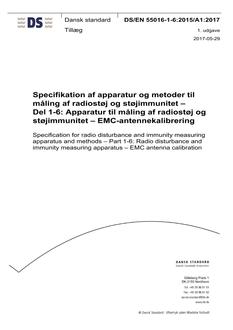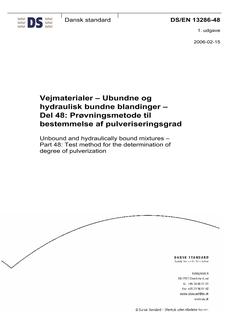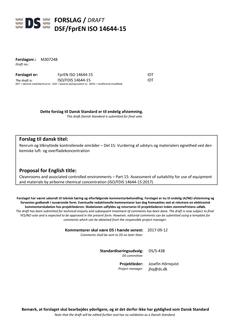-
-
Available Formats
- Availability
- Priced From ( in USD )
-
Available Formats
-
- Immediate download
-
$98.69Members pay $74.02
- Add to Cart
-
- Printed Edition
- Ships in 1-2 business days
-
$98.69Members pay $74.02
- Add to Cart
Customers Who Bought This Also Bought
-

DANSK DS/EN 55016-1-6
Priced From $252.49 -

DANSK DS/EN 13286-48
Priced From $50.09 -

DANSK DS/IEC TS 61000-3-16
Priced From $76.27 -

DANSK DSF/FPREN ISO 14644-15
Priced From $52.88
About This Item
Full Description
1.1 This part of ISO 22007 specifies a method for the determination of the thermal conductivity and thermal diffusivity, and hence the specific heat capacity per unit volume, of plastics. The experimental arrangement can be designed to match different specimen sizes. Measurements can be made in gaseous and vacuum environments at a range of temperatures and pressures. 1.2 This method is suitable for testing homogeneous and isotropic materials, as well as anisotropic materials with a uniaxial structure. The homogeneity of the material should extend throughout the specimen and no thermal barriers (except those next to the probe) should be present within a range defined by the probing depth(s) (see 3.2 below). 1.3 The method is suitable for materials having values of thermal conductivity, λ, in the approximate range 0,010 W⋅m−1⋅K−1 < λ < 500 W⋅m−1⋅K−1 and values of thermal diffusivity, α, in the range 5 × 10−8 m2⋅s−1 < α < 10−4 m2⋅s−1, and for temperatures, T, in the approximate range 50 K < T < 1 000 K. NOTE 1 – The specific heat capacity per unit volume, C, can be obtained by dividing the thermal conductivity, λ, by the thermal diffusivity, α, i.e. C = λ/α, and is in the approximate range 0,005 MJ⋅m−3⋅K−1< C < 5 MJ⋅m−3⋅K−1. It is also referred to as the volumetric heat capacity. NOTE 2 – If the intention is to determine the thermal resistance or the apparent thermal conductivity in the throughthickness direction of an inhomogeneous product (for instance a fabricated panel) or an inhomogeneous slab of a material, reference is made to ISO 8301, ISO 8302 and ISO 472. 1.4 The thermal-transport properties of liquids can also be determined, provided care is taken to minimize thermal convection.
Document History
-
DANSK DSF/PREN ISO 22007-2
Plastics – Determination of thermal conductivity and thermal diffusivity – Part 2: Transient plane heat source (hot disc) method (ISO/DIS 22007-2:2021)- Historical Version
-
DANSK DS/EN ISO 22007-2
Plastics – Determination of thermal conductivity and thermal diffusivity – Part 2: Transient plane heat source (hot disc) method (ISO 22007-2:2022)- Most Recent
-
DANSK DS/EN ISO 22007-2
currently
viewing
Plastics – Determination of thermal conductivity and thermal diffusivity – Part 2: Transient plane heat source (hot disc) method- Historical Version
-
DANSK DS/EN ISO 22007-2
Plastics - Determination of thermal conductivity and thermal diffusivity - Part 2: Transient plane heat source (hot disc) method- Historical Version





